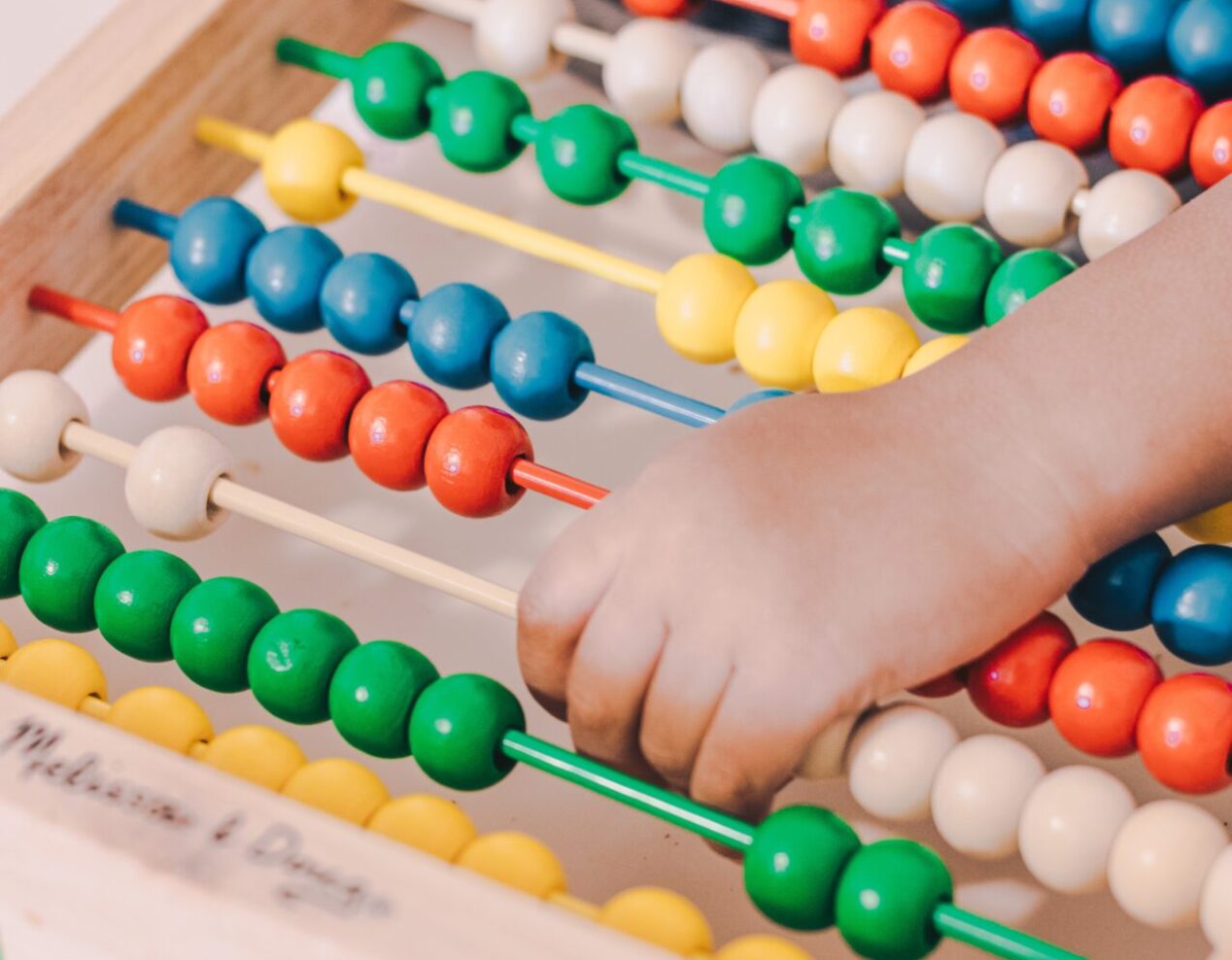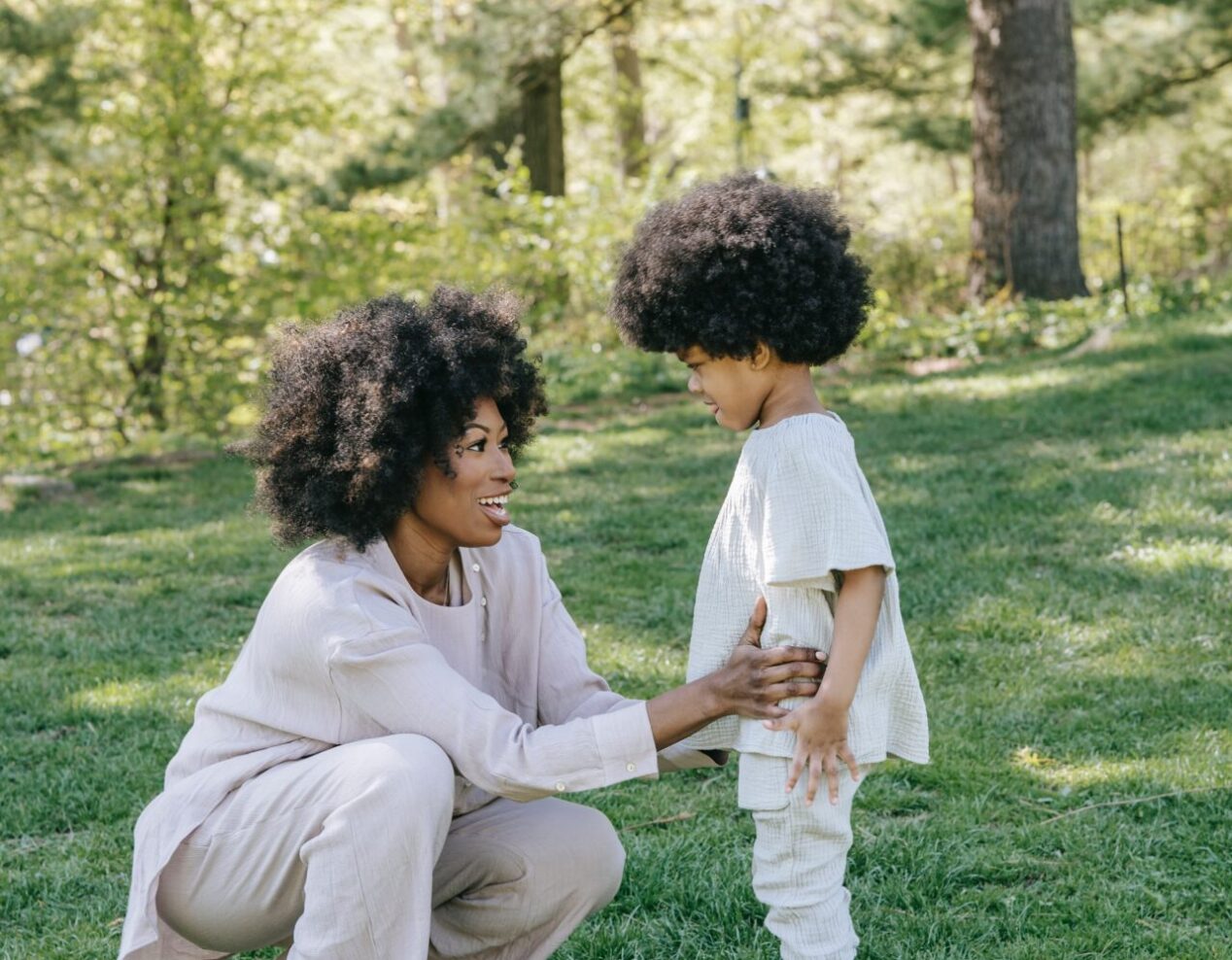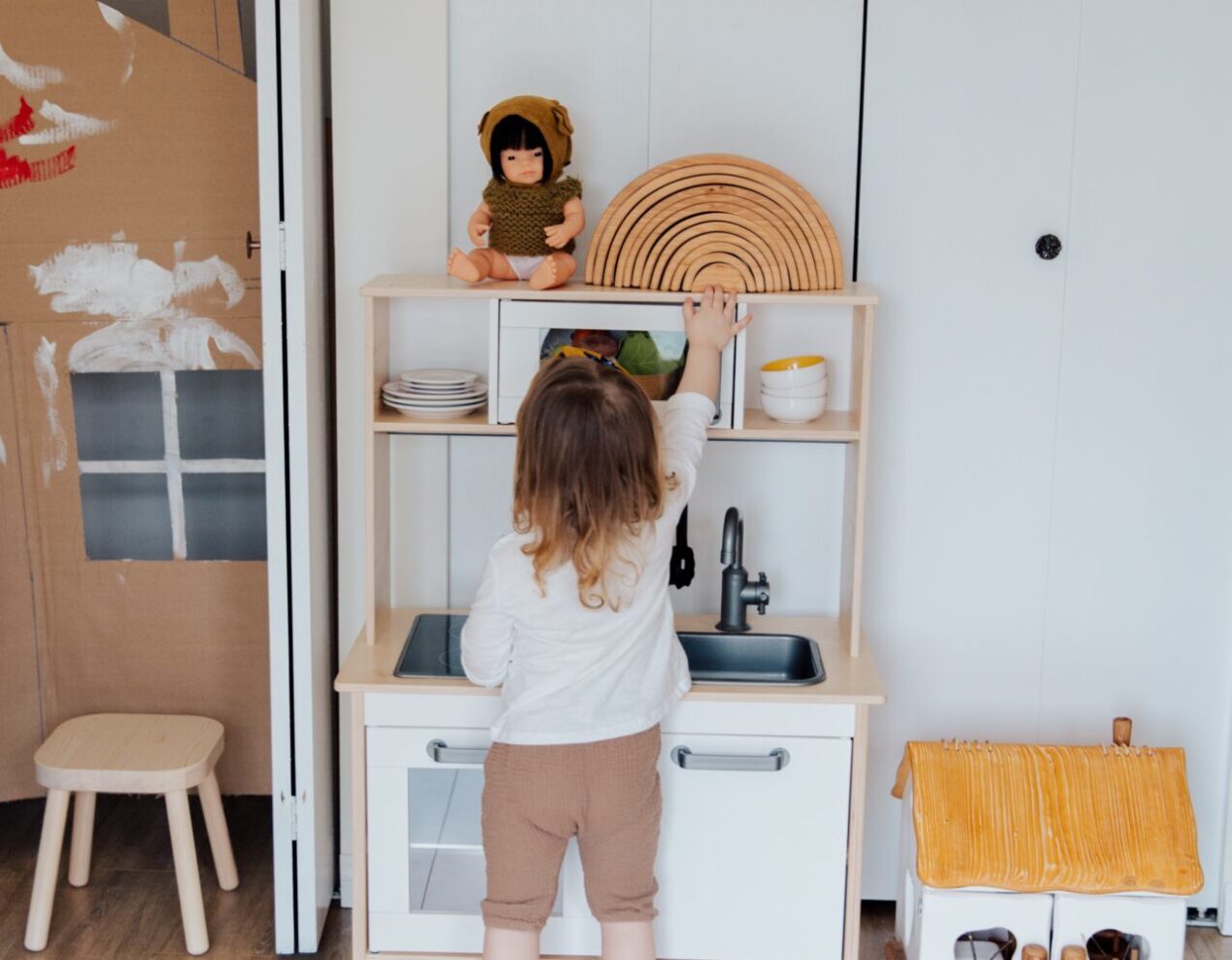Incorporating basic math lessons into your two-year-old’s daily routine

Around the age of two, a child typically begins to grasp the basic mathematical concepts of “one” and “two”, known as “one-to-one correspondence”. It may appear that they can count beyond this, but usually, this is just rote counting – they have memorized the sequence of numbers without truly comprehending what these numbers represent. Developing a sense of one-to-one correspondence is when a child realizes that the number “one” is associated with a single item:
Here is a look at the progression of mathematical learning during a child’s second year:
Children first start by remembering numbers sequentially and can (to a degree) recite them from memory. This resembles their approach to learning the alphabet: they can name a number or a letter without truly understanding that the number represents a certain quantity or the letter corresponds to a specific sound. By the age of three, many kids can understand the real value of numbers up to 5, meaning they can associate each count with a distinct object up to the count of five (and sometimes even beyond). They can identify five objects, counting each one separately. If your toddler can’t do this yet, don’t fret; it’s a complicated concept, and the learning pace varies for each child. It’s essential to remember that rote recitation (counting without truly understanding the quantities) is still a vital foundation skill to practice and appreciate.
Here are some strategies to nurture your two-year-old’s math skills: Assessing their understanding of math A little child and a man sitting on the floor showing two fingers Hold up one finger and ask, “how many fingers am I showing?” and listen to their response. If they correctly identify “one”, move on to two. Continue this exercise, counting your fingers slowly and precisely until your child can’t follow. Eventually, they might say “a lot!” or “I don’t know”. They may lose focus, or recite by memory without establishing one-to-one correspondence. Being aware of your child’s number sense can guide you on what to work on next.
Building on counting “Enumeration”, or counting objects one by one, is one of the most basic math skills your child will learn. Look for everyday things to count, such as:
Cars on the street
Fingers and toes Flower petals Animal legs Books on a bookshelf Bugs under a stone Toothbrushes in the washroom Legs on a spider Guide their hand with yours if you can, to help them count. Motivate them to say “one” when touching the first object, “two” for the second, and so on.
Practicing subitizing
Subitizing is the ability to instantly identify the number of objects in a group, without counting each one. For example, when you look at the dots on a dice, you can tell the number without counting each dot.
Subitizing is a skill in its infancy for your child—they probably won’t be able to subitize 3-5 items until around age 5—but starting with one and two can reinforce this crucial skill that will eventually become a significant part of their math proficiency. Practice with small objects such as blocks, pebbles, berries, and so on. Start by placing two items on a table, removing them, and asking how many there were. If they say “two,” move onto three.
Comparison: more, fewer, or equal
Place a small number of berries, pretzels, or apple slices in two bowls (up to 3 or 4) and give one bowl to your child. Count the items in your bowl (“1,2,3”) and then count the ones in your child’s bowl (“1,2,3”). Invite your child to eat one apple slice and then recount the contents in each bowl. You can say “oh look, now I have more apples than you do.” As you continue to eat the apples, talk about concepts like more, less, and the same. Although it might seem a bit studious to be so explicit with this lesson, games like this can greatly enhance your child’s understanding.
Counting in everyday routines
A small child helping to set the table One effective way to include math in everyday life is through simple tasks such as setting the table. Start with a small task. For instance, your two-year-old can take up the responsibility of placing napkins. For a family of four, give your child four napkins and have them place one next to each plate, counting with them as they go along.
Later, as their understanding improves, have them count the family members to determine how many napkins are required to set the table.
Early addition and subtraction games
This activity introduces your child to the basics of addition and subtraction. Hold a small object like a block in your hand and ask how many there are. Then hide the block behind your back and ask, “how many blocks are behind my back?” This activity can be a bit complex for a toddler as they may have recently mastered the concept of object permanence—understanding that things continue to exist even when they’re out of sight.
Extend the activity based on your child’s interest:
Hold one block, and after they identify the quantity, place it on the table. Ask again how many blocks there are—this is a very early introduction to the principle of conservation, which is the idea that the quantity of an object remains constant even when its position or other aspects change. Keep moving the block around to reinforce that it continues to be “one block.” Hold two blocks, and after they identify the number, hide one behind your back and show them the remaining one; ask again “how many blocks are behind my back?” After they answer, reveal how many you hid. You can also repeat the same activity but vary it by hiding both blocks, or—and this is a tricky one—don’t hide any behind your back, and see what they say. The concept of “zero” is quite complex, and your child likely won’t have it down yet. This is a great opportunity to practice the idea of “zero,” “none,” and “nothing.” Hide other objects while your child watches. Slowly and carefully count blocks into a box with a closed lid (again starting with one, then two), and ask your child if they know how many blocks are in the box. Always reveal the blocks at the end of these activities. Sing songs and read books about numbers Songs like “One, two, buckle my shoe” and “The ants go marching” teach counting in an engaging musical way. There are also several simple counting books like “Making Muffins” that reinforce numeracy while also helping to support early literacy skills.



